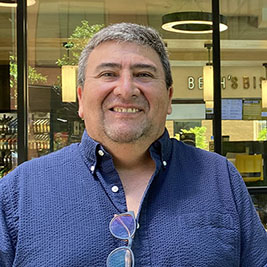Institute for Disability Research, Policy & Practice (IDRPP) is home to one of six equity, diversity and inclusion coaches who advise the nation’s university-based centers on disability.
Dr. Eduardo Ortiz’s role with the Associated University Centers on Disability lasts through September 29. But he said work on understanding diversity and its intersection with disability should—and will—continue much farther into the future at IDRPP.
AUCD is a membership organization that supports a national network of university-based, interdisciplinary programs, including IDRPP at Utah State University. AUCD selected Ortiz as one of several coaches to help programs throughout the nation implement its action plan for EDI.
He has worked with people from other parts of the country, and he said his coaching role has only solidified the conviction that understanding diversity is understanding one’s own community. Each will have its own different cultures, needs and potential solutions. The important thing is to stay humble, gather pertinent data, ask questions and listen attentively to the answers from diverse voices. From there, the community leaders can develop skills and act to address their needs. (Resources to better understand EDI issues are listed below.)
IDRPP has included diversity as one of its core goals for the coming years.
“We are looking at the intersection between disability and diverse multicultural populations,” Ortiz said. “What is the difference? Are there significant or relevant health disparities? In many cases we don’t have enough data to know with absolute certainty about many issues and challenges.
“We need to know what is our capacity, what are our needs, our individual and collaborative efforts. And sometimes what we think doesn’t match with what we are doing. We need to create an intentional and purposeful EDI culture.”
Asking questions, listening to the answers, and being responsive to this process can be hard. Involving people from minority communities in research consistently will often mean reaching across barriers in transportation and technology. “Sometimes they are far away, like rural Utah,” Ortiz said. “Or they don’t have technology, they don’t have the sophistication of the academic world. But their participation is critical as they are going to help us understand better their needs, challenges, and potential solutions.”
A common mistake many organizations make is to translate information from English to another language, without first interacting with people from these diverse cultures, figuring out what their needs are, and responding responding in a way that resonates with the targeted audience.
Finally, he said, it is hard to build trust with minority communities if an organization only communicates with them for the duration of a short-term project and then leaves again.
Here are some of Ortiz’s recommended resources on equity, diversity and inclusion:
View full article here.











